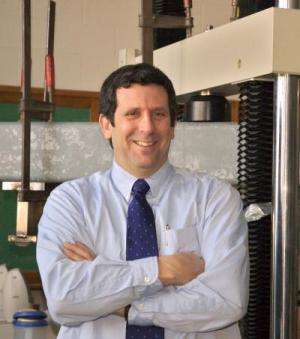NRC panel advises US DOD on green buildings

New recommendations by a National Research Council (NRC) expert panel on green and sustainable building performance could lead to a revolution in building science by creating the first large building performance database, says panel member Paul Fisette, a nationally recognized sustainable building expert at the University of Massachusetts Amherst.
Fisette and six other NRC panel members were asked to consider whether nearly 500,000 structures owned by the U.S. Department of Defense (DOD) worldwide are being operated as sustainably and as efficiently as possible according to a number of green building standards, including Green Globes, Leadership in Energy and Environmental Design (LEED) and American Society of Heating, Refrigerating and Air-Conditioning Engineers (ASHRAE).
Fisette and colleagues recently completed their nine-month assessment of energy efficiency, water use and many other sustainability factors at about 300,000 of the DOD facilities. One of their top recommendations is that the department should start metering such variables as energy and water use, to collect information on how different facilities perform in many different environments.
"One of the things we learned from this study is that the Defense Department is the perfect organization to be able to provide us with ongoing data," he says. "They are a single owner of a lot of property and they have control over how it's operated, along with costs, uses and standards. What is lacking in building science has been this consistent set of data, really large samples over time."
The NRC panel wrote, "DOD has the opportunity to continue to take a leadership role in improving the knowledge base about high-performance buildings, improving decision-support tools and improving building models by collecting data on measured energy, water and other resource use for its portfolio of buildings and by collaborating with others."
Panelists "pored through mounds and mounds of data," Fisette says, looking at building history and performance, comparing LEED to non-LEED certified buildings for evidence of a cost benefit to certification and identifying potential paybacks for adopting sustainable practices, for example. "In general, our findings and recommendations definitely support the idea that it is cost effective to design sustainability into these buildings," he notes.
But while building green is cost effective, "there certainly needs to be deeper, more meaningful scientific study, because there are a lot of variables and if you're not careful you can end up not achieving the environmental outcomes you had hoped for," he adds. "You need to be able to strictly measure performance to justify the environmental outcome."
DOD can help with this going forward, Fisette adds. "They have facilities all over world in different climates, their structures have an amazingly wide variety uses from barracks and offices to missile silos and underground launch control centers. In our report, we encourage them to take advantage of all this and start metering. If they start now, in five or 10 years we'd have a tremendous resource. Because right now there's a basic lack of good scientific data on how buildings perform. It would be a huge contribution to the green building movement going forward."
Fisette has been professionally involved in building science for more than 30 years, starting as a general contractor during the oil-embargoed, energy-conscious 1970s. "I was building solar homes across New England before it was popular," he recalls. Then as editor of the magazine Progressive Builder (formerly Solar Age) he grew more interested in the science and theory of building design and performance on an industry and global scale.
"I like to study how buildings work," he says. "People like me are systems thinkers. When you decide to turn a light on, everything cascades from that one motion, and it has everything to do with energy, water and the environment, from the wall switch all the way out to fish ladders and hydro dams. We can't talk about or address any environmental challenges without dealing with energy and water."
Now an associate dean for the UMass Amherst College of Natural Sciences, Fisette's recent NRC work marks his fifth stint of volunteer service to the national research agency, including a panel to assess health and productivity benefits of green schools. He also served two, three-year terms as a member of NRC's umbrella organization National Academy of Sciences' Board of Infrastructure and Constructed Environment, a strategy group for guiding policy and research.
"I'm proud to be a contributor to these efforts," Fisette says. "It's public service that makes me feel good."
Provided by University of Massachusetts Amherst

















